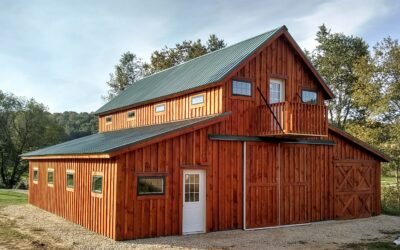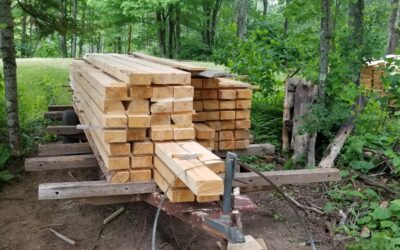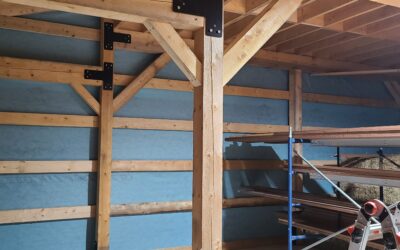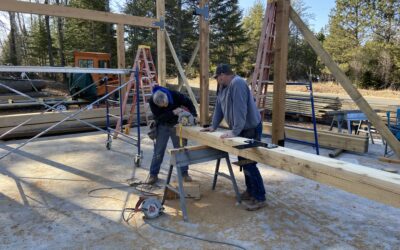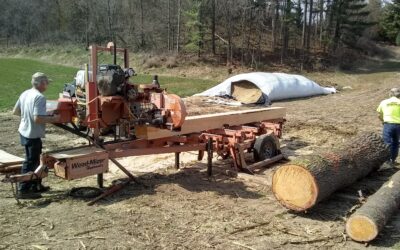Building Your Chicken Coop
by Isabelle Esch
Welcome to building your chicken coop, an article in my series raising chickens for beginners.
In this article we will cover all of the basics of picking your chicken coop plans and preparing to build your coop.
Buying a coop can be expensive, but despite how intimidating it may be, building a coop is really easy.
Especially with the right plans and advice.

Your Chicken Coop
So first things first, what kind of coop do you need? It all depends on what chicken breed you have and how much space you have.
If you have chicks, you want a warm small coop that can be closed off so they are not outside or in a run. Chicks are very fragile and can easily hurt themselves.
You also want to make sure they are close to you and safe from predators because chicks are very vulnerable and have no defenses.
You will want easy access to them because you will want to check on them often.

Laying Hens
If you have laying hens you will probably want a nice big house with lots of nest boxes, easy access to the boxes, and a run that you can close up.
You will want ventilation and a way to easily clean the coop. You may also want a door in the run so you can release them for the day while you clean.

You could also put your hens in a mobile tractor.
If you put them in a tractor then you will want it to be tall enough to put nest boxes far off the ground and perches for your hens to sleep on.
Chickens love to perch, it keeps them safe from predators.

Meat Birds
If you have meat birds, you will probably want a low to the ground, mobile tractor.
This prevents jumping and perching that can cause heavy birds like Cornish Cross to break their legs.
If they find a high place they may try to perch and end up falling and possibly breaking a leg.
You don’t want to have perches in your tractor either, they could hurt themselves.
You won’t want to let your meat birds free range if they have big chests or weigh a lot either.
If your meat chickens are an heirloom chicken breed, you won’t need to worry about that as much.

Winterizing
If you live in a place that gets cold, rainy, or harsh weather in the winter then you will probably want to move your chickens to a winterized pen.
You probably will want to send your meat birds in to the butcher before winter, so I wouldn’t worry about them too much, however they can go into the same kind of pen as your laying hens, though I wouldn’t put them together.

When you are building your chicken coop for winter you will most likely want a small, easy to heat pen with thick walls, maybe insulated, and a place for you to put a light if necessary.
They do a pretty good job of keeping themselves warm, but if you want eggs all winter a light is a good idea.
I always close mine off from the run if there is one and give them extra bedding.

Materials For Building Your Chicken Coop
Once you know what kind of coop your are building and have your plans, your plans should give you all the instructions you need to get building.
I would suggest using just regular, untreated wood for your coop, your chickens won’t care, and you can always add a stain, outdoor paint, or a waterproofing agent later to make you coop picture perfect and help keep your coop for many years.
A word of caution, don’t use chicken wire. It may keep your chickens in, but it’s so flimsy that any predator can rip it open easily. I would suggest using welded wire fencing.

Keeping clean
Once you’ve finished building your chicken coop, you will need to regularly maintain and take care of your coop.
Scooping out old bedding and replacing it, spraying it out with a hose, and using bleach occasionally are all great ways to keep your coop clean.
You will want to replace nest bedding frequently.

Thanks for reading! Check out the articles in my series Raising Chickens for Beginners and I wish you good luck on your chicken raising journey.
Attention Homesteaders: Get your chicken coop, shed, and barn plans here.
The Homesteader
- Library of Barn Plans under 1k square feet
- Chicken Coop Plans Library
- Timer Frame Shed Plans Library
- How to Build a Barn Course
- Chicken Coop Course
Read More about Post and Beam Barn Kits below.
How to Save $15,000 Building Your Own Barn: A Complete DIY Guide
40x50 Horse Barn Style Barndominium Building your own barn can save you serious money - we're talking about $15,000 or more in labor costs alone. But before you grab your hammer and start swinging, there are some important realities to consider about DIY barn...
How to Store Lumber to Prevent Warping
Learn how to store lumber effectively to prevent warping, ensuring your wood remains stable and ready for your next project.
How to Use Local Lumber to Cut Barn Costs
Learn how using local lumber for barn construction can save money, reduce environmental impact, and support your community.
Mortise and Tenon vs. Steel Plate Joinery in Timber Frames: What DIY Builders Need to Know
Explore the differences between mortise and tenon joints and steel plate connections in timber framing, focusing on strength, aesthetics, and construction methods.
Checklist for Hiring a Barn Contractor
Learn how to hire the right barn contractor with essential tips on credentials, reputation, bids, and communication for a successful project.
How to start a barn wedding venue business
Learn how to successfully launch a barn wedding venue business, from planning and renovations to legal requirements and marketing strategies.
Is it worth while to have a local sawmill cut some or all of my Barn Lumber or even do it myself?
We have a LOT of eastern red cedars, Tulip Poplars, among other species. If I have a local sawmill cut our pieces for us, would you expect a significant savings overall?
Pride and Accomplishment in Having Built a Barn Myself
Besides the utility of having a barn and the value it adds to our property, having built the barn myself has given me a sense of pride and accomplishment that’s hard to place a value upon.
Free Chicken Coop Plans
You can build this hen house with these free chicken coop plans. It is easy to do. All you need is some rough cut lumber, a hammer, nails, and a circular saw. You can even build one with regular dimensional lumber from your local lumber yard. I built one like this for...


